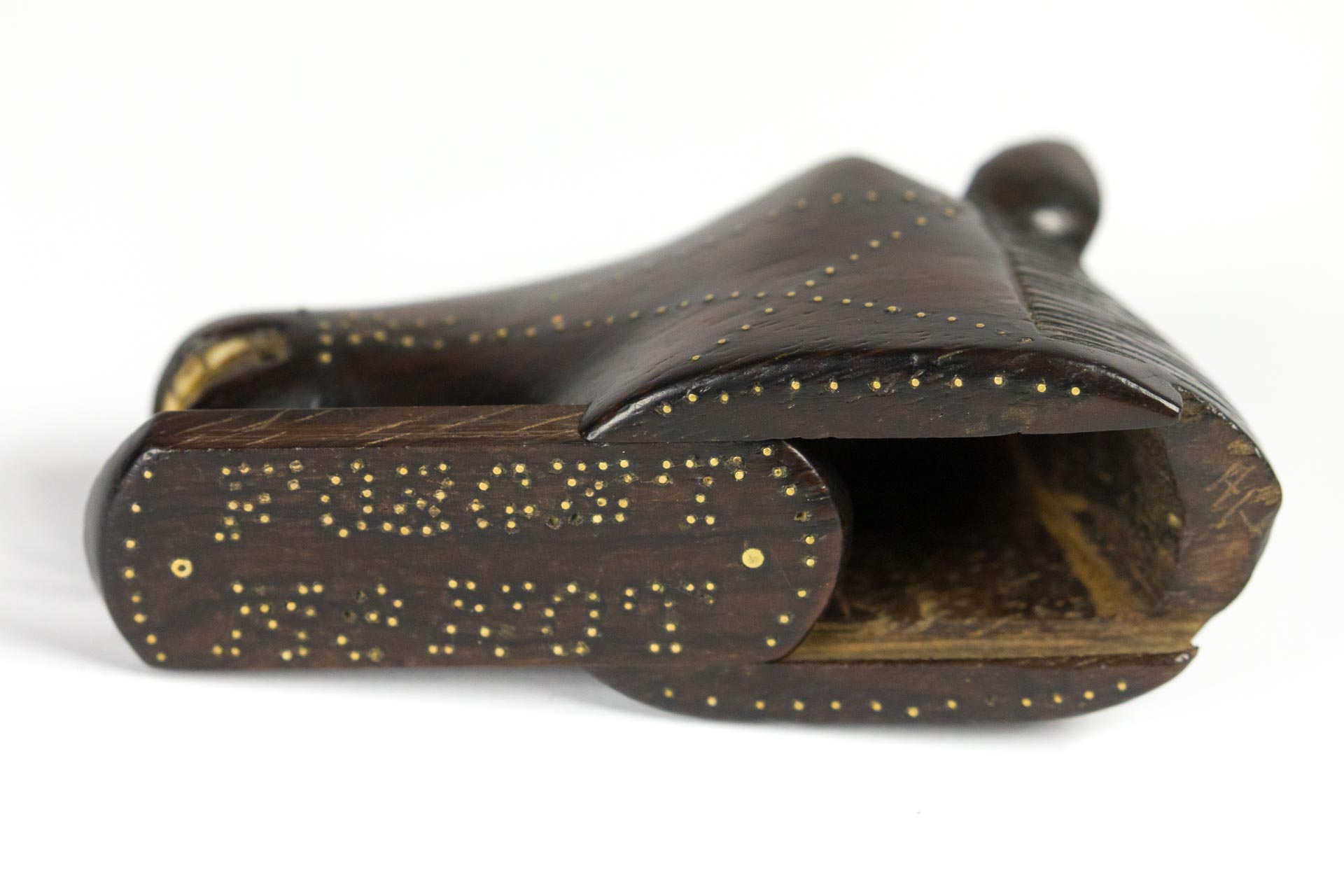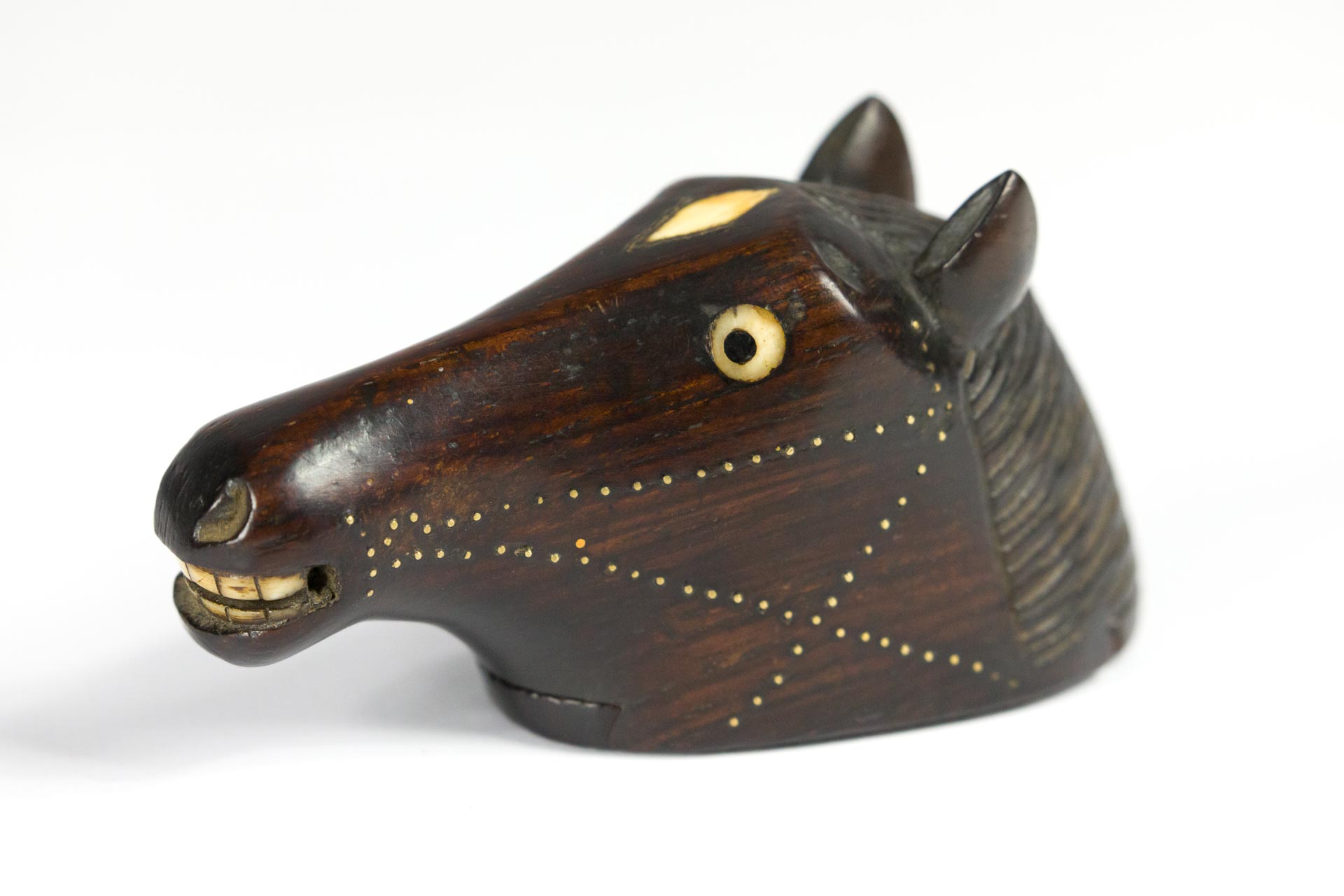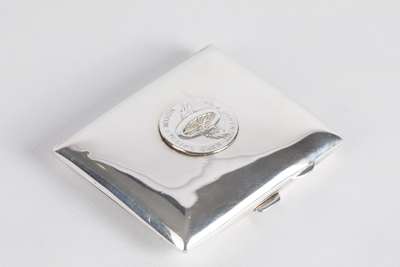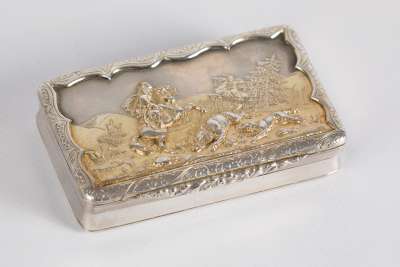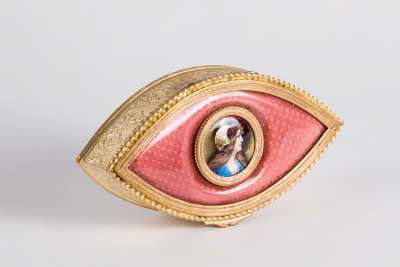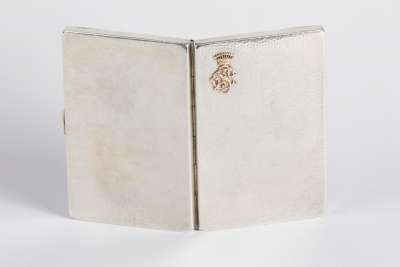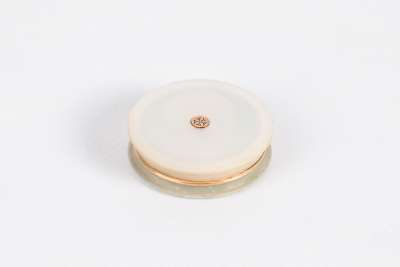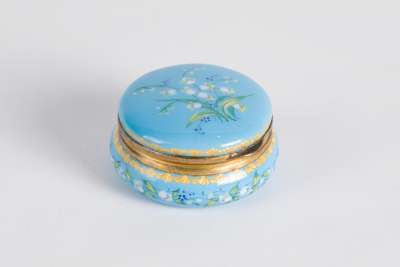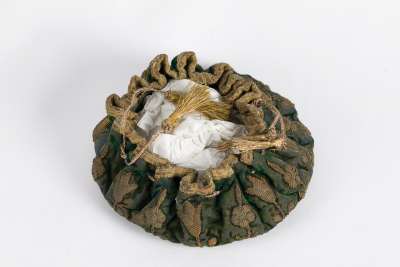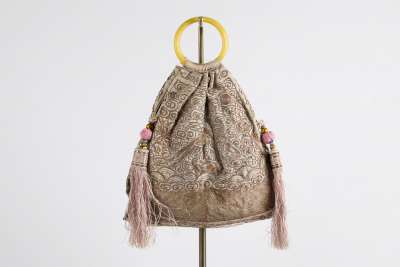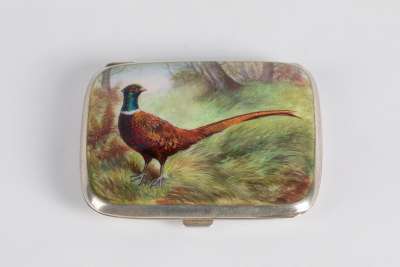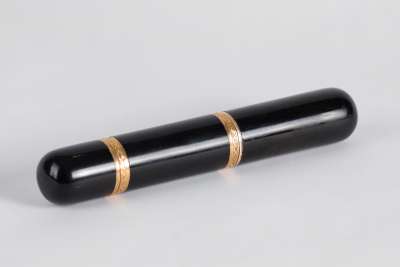This English snuff box, dating back to circa 1820, is a unique piece crafted in the form of a horse's head. Made from rosewood, it features intricate details such as bone inlays for the eyes and a distinctive forehead star, adding to its representation of equestrian elegance. The artisan's skill is evident in the smooth finish and lifelike details that capture the essence of the horse's features. On the base of the snuff box, the engraving 'Forget Me Not' adds a touch of sentimentality, possibly indicating its use as a keepsake or gift. This antique originates from England, embodying the craftsmanship and style of the early 19th century.
Condition Report
The snuff box is in very good condition, showing minimal signs of wear, which is consistent with its age and historical use. The rosewood maintains its original lustre, with only minor surface scratches that do not detract from its overall appearance. The bone inlays are intact, without any visible damage or discolouration. The hinge mechanism operates smoothly, ensuring the lid remains securely closed when not in use. The engraved inscription on the base is still clearly legible, highlighting the piece's historical authenticity. Overall, this snuff box has been well-preserved, making it a valuable addition for collectors of antique wooden items.
Dimensions
Weight: 60gm, Length: 9.8cm, Width: 3.7 cm, Height: 4.6cm.
A Keepsake for Personal Use
This snuff box was originally intended to store finely ground tobacco for personal use. During the early 19th century, snuff-taking was a common practice, and such boxes were often carried by individuals as a personal accessory. The horse-head design suggests it may have belonged to someone with an affinity for horses, possibly a gentleman involved in equestrian pursuits or a member of the hunting community. The inscription 'Forget Me Not' indicates it may have been given as a sentimental gift, serving as both a practical item and a cherished keepsake.
Exemplary of Early 19th Century Craftsmanship
This snuff box exemplifies the intricate craftsmanship typical of the early 19th century in England. The choice of rosewood, known for its durability and fine grain, reflects the era's appreciation for high-quality materials. The detailed carving of the horse's head showcases the artisan's skill in creating lifelike representations, a hallmark of the period's artistry. The use of bone inlays for the eyes adds a contrasting texture, enhancing the box's visual appeal and demonstrating the creative use of materials that was prevalent during this time.
The Craft of Rosewood and Bone Inlay
The making of this snuff box involved meticulous handcrafting techniques, indicative of the period's artisanal practices. The rosewood was likely carved by skilled woodworkers, who shaped it into the detailed form of a horse's head. The bone inlays were carefully set into the wood, requiring precision to ensure they complemented the natural grain and finish. This combination of materials not only provided durability but also added aesthetic value, making it a treasured accessory for its owner. The engraving 'Forget Me Not' would have been hand-etched, reflecting the personal touch often found in items of this nature.
Anonymous Artisan of the Regency Era
While the specific maker of this snuff box remains unknown, it was likely crafted by an anonymous artisan during the Regency era, a time known for its emphasis on refinement and elegance in personal items. Craftsmen of this period often worked in small workshops, producing bespoke items for clients who valued uniqueness and fine craftsmanship. The detailed work suggests an artisan skilled in both wood and bone work, reflecting the diverse talents required to produce such intricate pieces. Although unsigned, the quality of the work speaks to a high level of expertise, typical of the period's best artisans.
Collectible for Enthusiasts of Equestrian Antiques
This snuff box holds particular appeal for collectors of equestrian antiques, offering a glimpse into the past where such items were both practical and symbolic. Its unique design and historical significance make it a coveted piece for those interested in early 19th-century English artefacts. Collectors are often drawn to the combination of functionality and artistry, appreciating the craftsmanship that has allowed it to endure for over two centuries. As a collector's item, it represents a connection to a time when personal accessories also served as expressions of identity and status.

